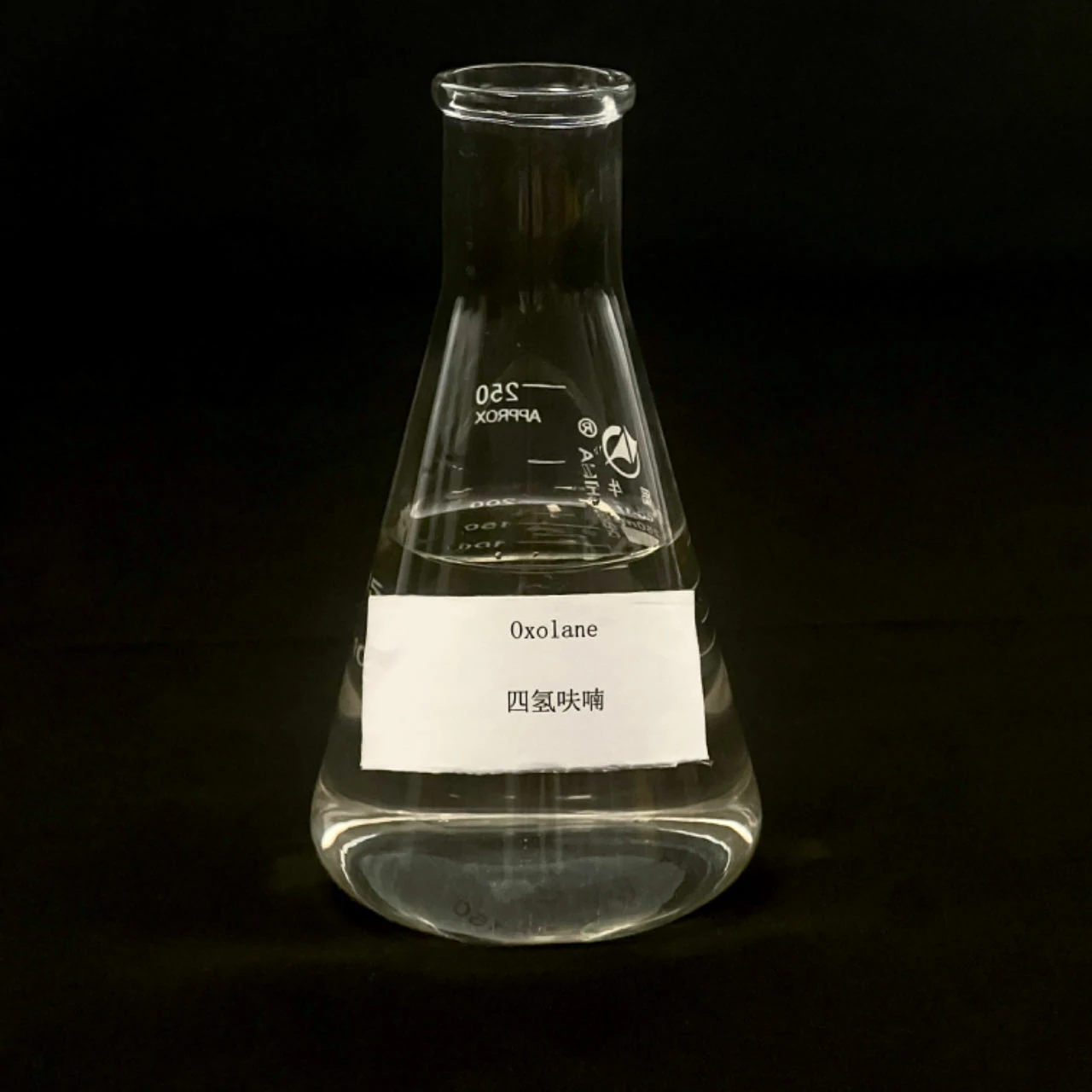When handling oxolane, it is important to consider potential health and safety considerations.
Here are some key points to keep in mind:
Inhalation: Inhalation of oxolane vapors or mists should be avoided, as it may cause irritation to the respiratory system. Ensure proper ventilation in areas where oxolane is used or stored.
Skin Contact: Direct contact with oxolane may cause skin irritation. It is advisable to wear protective gloves, clothing, and goggles or a face shield when handling oxolane to prevent skin contact.
Eye Contact: Oxolane can cause severe eye irritation. In case of eye contact, immediately rinse the eyes with plenty of water for at least 15 minutes and seek medical attention.
Ingestion: Oxolane is not intended for ingestion. If ingested accidentally, do not induce vomiting, but seek immediate medical attention.
Flammability: Oxolane is highly flammable and can form explosive vapor-air mixtures. It has a low flash point, and open flames, sparks, or other ignition sources should be strictly avoided in its presence.
Storage and Handling: Oxolane should be stored in tightly sealed containers in a cool, well-ventilated area, away from heat sources and incompatible substances. Follow proper storage and handling procedures as specified in safety data sheets (SDS) provided by the manufacturer.
Personal Protective Equipment (PPE): When working with oxolane, it is recommended to use appropriate personal protective equipment, including gloves, safety goggles or face shield, and protective clothing to minimize the risk of exposure.
Spills and Leaks: In case of spills or leaks, contain the material and prevent it from entering drains, water sources, or soil. Use appropriate absorbent materials and follow proper disposal procedures in accordance with local regulations.
Hazardous Reactions: Oxolane can react vigorously with strong oxidizing agents, acids, and alkalis. Avoid contact with incompatible substances, as it may lead to hazardous reactions or release of toxic gases.
Emergency Preparedness: Ensure that appropriate safety measures, such as fire extinguishers and emergency eyewash stations, are readily available in areas where oxolane is used or stored. Familiarize yourself with emergency procedures and train personnel accordingly.
It is crucial to consult the safety data sheet (SDS) provided by the manufacturer for specific guidelines and recommendations regarding the safe handling, storage, and disposal of oxolane.
How is oxolane synthesized?
Oxolane, also known as tetrahydrofuran (THF), is commonly synthesized through a process called catalytic hydrogenation of furan.
The general steps involved in the synthesis of oxolane are as follows:
Furan Activation: Furan, a five-membered heterocyclic compound, is initially obtained as the starting material. Furan is typically derived from biomass or petroleum feedstocks.
Hydrogenation: Furan is then subjected to catalytic hydrogenation in the presence of a suitable catalyst, China Oxolane manufacturer commonly a transition metal catalyst such as Raney nickel or palladium. The hydrogenation reaction involves the addition of hydrogen (H2) to the furan molecule.
Formation of Oxolane: The hydrogenation process results in the conversion of furan into oxolane (THF). The addition of hydrogen atoms to the furan ring leads to the saturation of the double bonds, forming a saturated cyclic ether structure.
The catalytic hydrogenation of furan to oxolane is typically carried out under specific reaction conditions, such as controlled temperature and pressure, to optimize the yield and selectivity of the desired product. The choice of catalyst and reaction parameters may vary depending on the specific reaction conditions and desired efficiency.
It is worth noting that oxolane can also be synthesized through other methods, such as the acid-catalyzed ring closure of 1,4-diacetals or the reduction of γ-butyrolactone. However, catalytic hydrogenation of furan remains one of the most common and widely used methods for the synthesis of oxolane on an industrial scale.
